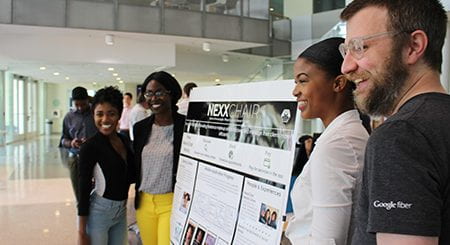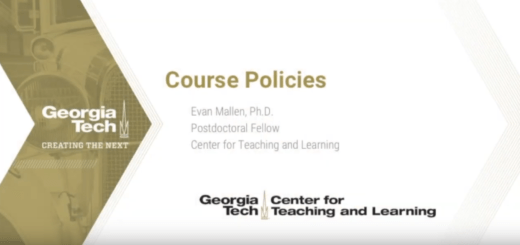World-class Teaching: Faculty Advice from the ITA Liaisons

The World-class Teaching series highlights the work of International Teaching Assistants at Georgia Tech; it is written in collaboration with the Center for Teaching and Learning International Teaching Assistant Liaisons. The ITA Liaisons are graduate teaching assistants who also serve as ITA leaders, advocates, and mentors across campus. Interested in learning more? Read Part 1 and Part 3 of the series.
At Georgia Tech, our classrooms thrive on diversity—not only among our students but also among the instructors and teaching assistants who help them succeed. International teaching assistants (ITAs) play a pivotal role in our learning community, bringing a wealth of global perspectives and unique expertise to their work. But for ITAs, teaching in a new country and often in a new language can present challenges that require understanding and collaboration to overcome.
We’re back with Part 2 of World-class Teaching, a series highlighting the work of international teaching assistants at Georgia Tech. Last week we met the CTL ITA Liaisons, who serve as leaders within the ITA community and advocate for ITA needs. This week, we asked them to share their personal experiences as international graduate teaching assistants as well as ideas for meaningful faculty support.
Be aware of when students arrive in the U.S.”
-Ximena Pizarro-Bore, ITA Liaison
Pizarro-Bore asks faculty to be mindful that international students often arrive in the U.S. right before classes begin. They are still figuring out the basics of life in a new country while also balancing new studies and a new job. “It’s important to connect on a personal level,” said Pizarro-Bore. “Be understanding with the fact that they may have just arrived in a new country. Try to make a personal connection with students. If you have any international experience yourself, sharing that is also important.” In Pizarro-Bore’s experience, finding common ground with faculty can help ITAs feel more at ease in the classroom.
“If you can, pair an experienced TA with a new TA.”
-Ehsan Asadollahi, ITA Liaison
Asadollahi, who is in the Electrical and Computer Engineering (ECE) department, points out that new TAs may struggle with problem-solving in an unfamiliar environment and might need some additional support as they start their work. “This is something ECE is already doing. By placing an experienced TA with a new TA, the experienced TA can help the new one start in their role.” This system helped Asadollahi when he was a new ECE TA; he is now equipped to offer the same support to incoming teaching assistants.
“Organize an activity to welcome new students and TAs.”
-Chang Ding, ITA Liaison
Ding noted that she felt lonely when she first arrived at Tech but made new friends when her department scheduled a back-to-school social. It provided a space for new students and TAs to meet one another and the department’s faculty; those connections proved helpful throughout the year. Ding also mentioned that the School of Earth and Atmospheric Sciences (EAS) holds weekly meetings between TAs and faculty where they discuss upcoming labs and lectures. TAs can discuss common challenges and troubleshoot together, and faculty are able to share teaching tips. For Ding, these meetings help everyone stay on the same page; with consistent collaboration, EAS faculty and TAs are often able to prevent problems before they arise.
“Be aware of cultural differences when you share examples.”
-Ximena Pizarro-Bore, ITA Liaison
“In some of my first classes, the professors would use local examples or tell jokes that rely on local humor as a way of explaining things in class. I couldn’t understand and there was no way I could know that some of those comments were jokes.” Pizarro-Bore also recommends being approachable, particularly at the start of the new semester, so that new ITAs aren’t afraid to ask for support.
“Clarify colloquialisms.”
-Sarah Kegley, ITA Program Manager
“It’s not wrong to use colloquialisms and cultural references; they’re an important part of natural communication. However, like Ximena, I encourage you to notice when you use this type of reference and clarify what you mean,” explained Kegley. As the ITA Program Manager, Kegley has heard multiple stories about colloquialisms causing confusion for international students. Phrases like “Drink the Kool-Aid,” “We’re not in Kansas anymore,” and “Between a rock and a hard place,” are examples of sayings that need context and explanation after being used in order to prevent misunderstandings.
By embracing the advice shared above, we hope to create classrooms where everyone – students, teaching assistants, and faculty alike – can thrive.




